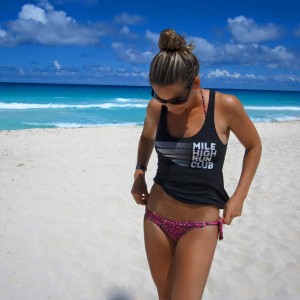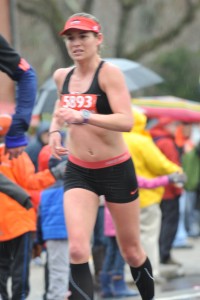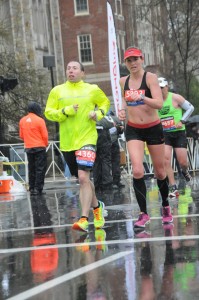It’s the time of year when many folks head out-of-town on vacation. Summer vacations kinda rock, though they can pose a challenge if you are in the middle of training for a race or fitness goal. Today’s blog is all about travel and training – and how to strategize to make training happen while away, and when also to also embrace vacation and let training slide.
When in the middle of training, I suggest planning a vacation that complements training instead of complicating it. For example, a week in Cancun in June is going to guarantee very hot and humid conditions, and is also the kind of vacation that promotes consumption of alcoholic island beverages all day – not drinking water or being active. A vacation somewhere with cooler conditions over the summer or a place that promotes being active will perhaps be a better fit for training. However, a week in Cancun with no races in the near future can be a beautiful thing!
When on vacation and attempting to stick to a rigorous training plan, here are some tips:
- Run or train early in the day, that way it’s out-of-the-way and your training won’t be derailed by drinking, eating, or sightseeing.
- Research running routes and get familiar with the area. Ask the hotel staff for recommendations if you need help.
- Look into hotels with gyms. Many resorts focus on other amenities and skip the gym, or have a bare bones option. If training is important to you, don’t assume your hotel will have a gym you can rely on.
- Pack GU, water bottles, and any other fuel you may need. Chances are you won’t be able to purchase or stash fuel along your route, so be prepared to bring what you need before you head out-of-town.
- Accept that your training may be sub-par while on vacation, and focus on maintaining fitness – not building fitness. The odds are that you won’t be running repeats on a track or clocking a 20-miler while on a cruise, for example.
- Plan for your vacation week to be a “recovery week” in training. Doing so will mean your mileage and intensity will purposely be less – which will fit vacation-mode beautifully.
- Look into local races or running groups. Both are great motivation, good for accountability, and ideal for running in a new place.
Back in 2013, I was on a Caribbean cruise for a week in August. My goal marathon, scheduled for that November, was a big goal for me. I embraced the idea that my vacation would be a recovery week – and placed my long runs at either end of the vacation so that it was a none-issue while on a boat. However, I was the idiot in the gym most days, and also the one running mile repeats on the beach in St. Thomas at 10am. With a good 12 weeks of training after my vacation, I PR’d my marathon time by 10 minutes.
If you are not currently training for a specific race goal, I highly recommend embracing some time off. It can be extremely liberating to take a vacation from reality – training included. I recently took a full 10 days off from all training while on vacation. I really loved time away from training – more time off from running than I’ve taken in over a year! Even after a 24-hour Ultra Marathon last July, I was back to running in under a week. While it felt odd to not make running part of my daily routine, it was great. I also came back home rested and really excited to get back to running and big goals.
Don’t worry about losing fitness during a vacation. Taking a week or so off from training may actually be a really good thing. Many of us are extremely dedicated to our weekly mileage, and forget that some recovery is necessary for our bodies to recover, build stronger and avoid injury. A vacation may be just what you need!










